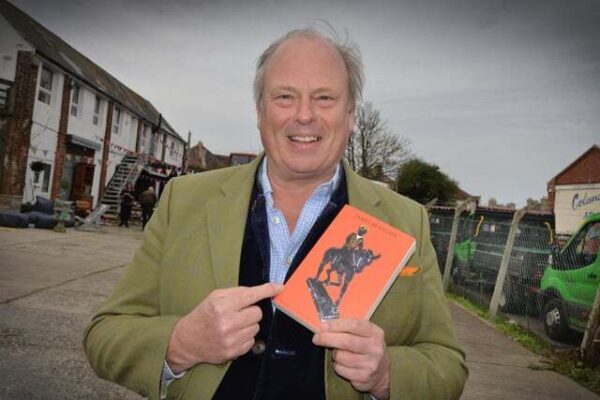Antiques Secrets
Exclusive Interview with James Braxton

A familiar and much-loved face to millions of BBC Antiques Road Trip viewers, James Braxton has now applied his deep knowledge of the antiques world to cosy crime writing. We spoke to him ahead of his Wigtown Book Festival appearance where he’ll be discussing Barty – A Tale of Stolen Bronze.
Tell us a little bit about the book.
My wife describes my book as a mixture of Lovejoy and PG Wodehouse, with quite a lot of Keith Floyd poured in!
It’s very gentle. It's a story of friendship. My two heroes are friends called Lionel and Barty, both are unmarried. Barty, an ex-auctioneer, runs a small cellar restaurant and is quietly rather successful. His great friend Lionel is an antiques dealer. Lionel’s been married twice already.
It's cozy crime, with no sharp knives, no lead piping, it’s all very gentle.
How did you start writing
By accident really, we had a statue pinched from our garden. Our daughter, Amelia came down for the weekend after its retrieval and said that “the story is so unbelievable you must write about it” and that was the push I needed. We were going on holiday so I packed a lined book and pen and started. I’m not mad about sitting in the sun, juggling sunglasses with sun cream. I commandeered a table at a beach side restaurant immersing myself in a fictional world. It was a wonderful experience.
Is the real antiques world as colourful as the one portrayed in fiction?
Yes it is. It’s full of interesting characters. When I was growing up there were several sorts of people in the trade; knocker boys, house clearers, runners, dealers, auctioneers, collectors, private and foreign buyers. There was quite a pecking order and almost self-sustaining.
The knocker boys were generally based in Brighton and went around the country. They left on a Monday morning. They might go to Carmarthenshire or to Gloucester, they had their patches for knocking on doors. The runners took pieces and showed them to dealers – they very often operated from the back of vans, everything covered with lots of grey blankets. The top dealers, though, they never left their premises, everything came to them.
After I got married in the ’80s we moved to Brighton, where the shops had signs saying “trade only” and “closed”. They didn't want people coming in and finding out the price of what they were selling things for as they bought domestically and exported internationally, principally to Europe and America.
What drew you into antiques?
My grandfather was an estate agent, always buying stuff and my mother was very keen to visit art galleries, country houses, museums. Initially I was taken kicking and screaming, but through osmosis it creeps in and suddenly you think “oh, I quite like this”. And that's how it happened.
Are there any particular finds you remember?
One of the most interesting things was the most expensive piece I ever sold. It was about 20 or 25 years ago, a contemporary picture by an Irish artist called Paul Henry.
It was of a Connemara landscape that's very popular, and I discovered it in the spare room of two sisters in a bungalow near Battle in East Sussex. It had been left to them by one of their bridge partners.
I had recently sold a signed artist proof by Paul Henry for about £280, so I recognised the artist. I thought it might be a print and then I got closer and realised, oh my goodness, it’s an oil on canvas and it’s signed.
Anyway, there was a lovely engineer from Birmingham, who already had a Paul Henry but he had two sons and wanted to leave one to each of them. There he was bidding against all the London trade. In the end he bought it for more than the sale price of the bungalow.
Will there be another book?
I've written 40 chapters already. It’s called The Crocodile Stone and it's set in Sri Lanka, and it's about the discovery of a fabulous royal blue sapphire.
It’s discovered in the Mahaweli river that runs through Kandy and it will change lives. It's called the Crocodile Stone because the young boy’s father was killed by a river crocodile.
It features Lionel the antique dealer from the first book. It will be part of a trilogy.
